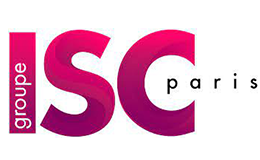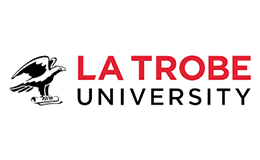How To Study Fine Arts In Sweden: What It's Like, How Much It Costs, And The Future Scope
How much does it cost to study in Sweden for international students?

How To Study Fine Arts In Sweden: What It's Like, How Much It Costs, And The Future Scope
The article explains how to start the process of studying Fine Arts in Sweden, what it's like and the costs. The article also breaks down what the future career opportunities might be for people who study Fine Arts in Sweden as well as some of the things they can expect after they graduate.
What is studying fine arts in Sweden?
Studying fine arts in Sweden can be a rewarding and exciting experience for you. With a strong focus on creativity and critical thinking, the curriculum at Swedish universities is designed to challenge and engage students. In addition to your core coursework, you will likely take courses in music, dance, theatre, art history, and more.
At the undergraduate level, studies typically last three years. For the first two years, you will take classes in theory and practice of the arts. In your third year, you will specialize in one area of the arts (e.g. painting or sculpture). You may also choose to undertake a research project during your third year. A typical annual tuition fee at a Swedish university for a student studying fine arts is around SEK 80,000-100,000 (USD 11,000-15,000). This amount may increase depending on your course of study and location.
Sweden has been recognized as one of the world’s leading destinations for fine arts education. The country has a long history of producing acclaimed artists and architects, including Karin Ahlborg and Erik Gunnar Asplund. Today there are numerous renowned institutions offering prestigious courses in the fine arts in Sweden
What are the different types of fine artists in Sweden?
There are a few different types of fine artists in Sweden.
The first type are the traditional painters. They use oil paints, often creating landscapes or portraits. The second type of artist are the sculptors. They create large pieces of art that usually have a religious or political message. The third type of artist are the photographers. They take pictures of people and places, often using creative lighting setups to create interesting images.
All three types of artists need to have a good knowledge of anatomy and perspective in order to create their work correctly. However, the amount of skill required to be a good painter, sculptor, or photographer differs greatly from artist to artist.
So if you're interested in studying fine arts in Sweden, it's important to research which type of artist would be best suited for you before making any decisions. But overall, studying fine arts in Sweden is an incredibly rewarding experience and there's no limit to what you can achieve if you're passionate about your work.
Why study in Sweden?
There are many reasons to study fine arts in Sweden. Sweden has a long and distinguished history in art and design, and its universities are world-renowned for their programs in the arts. The country also has a rich cultural heritage, with a wide variety of theaters, museums, and galleries. Sweden offers an excellent quality of life, with generous government funding for student expenses. The tuition and living costs are lower than in many other European countries, making it possible to study fine arts without breaking the bank. And since Sweden is a member of the European Union, students have access to free education across the continent. So if you're looking for a place where creativity is respected and celebrated, Sweden is the perfect place to study fine arts.
Who can be a fine artist in Sweden?
Anyone can be a fine artist in Sweden, as long as they have a passion for the arts and are willing to put in the hard work. The cost of studying fine art in Sweden is relatively affordable, with tuition fees averaging around $6,000 per year. However, there are also many opportunities for scholarships and loans available, so students need not feel limited by their finances. The future scope of fine art in Sweden is promising, with rising interest from both domestic and international art collectors. So if you have an artistic inclination and are looking for a creative environment to develop your talent, Sweden is definitely worth considering as your home country.
What courses can you take at Swedish universities?
Swedish universities offer a variety of courses that can be taken to study fine arts. This includes classes in painting, sculpture, drawing, photography, and architecture. The range of courses available is huge, which means that no matter what your interests are, there is likely a course that will fit within the scope of your studies.
The cost of studying art in Sweden is generally very reasonable. In fact, some courses even have tuition fees that are lower than the average tuition fees charged in many American universities. Additionally, many Swedish schools offer generous financial aid packages that make it possible for students from all backgrounds to attend art school without facing significant debt burdens. The future scope of fine arts education in Sweden is also impressive. Many schools are currently investing in new facilities and training programs to improve the quality of their curricula. This means that fine arts education in Sweden is poised for continued growth and development over the next few years.
How much does it cost to study Fine Arts in Sweden?
Sweden is a great place to study Fine Arts, with very affordable tuition rates and plenty of opportunities for students to get involved in the arts community. In fact, Sweden has been ranked third in the world for arts funding per capita! Here's a breakdown of how much it costs to study Fine Arts in Sweden, and what you can expect to pay:
-Tuition for an undergraduate degree in Fine Arts in Sweden can cost between $1,500 and $5,000 USD per year. This includes course materials and mandatory student activities.
-If you're studying abroad in Sweden, your tuition will be significantly less expensive - typically around $3,000 USD per year. However, you'll still need to cover your own expenses (such as food and accommodation), so make sure you have enough money saved up before you arrive!
-There are also a number of scholarships and bursaries available which can offset some of the costs associated with studying Fine Arts. Check out the website of your chosen institution for more information.
Is it possible to make a living as a fine artist in Sweden?
It depends on the artist. For some people, fine art can be a full-time profession. But for most artists, it’s a part-time or supplemental income pursuit. In fact, only about 5% of Swedish artists earn their living from their art. That said, the average annual income for a professional fine artist in Sweden is around $30,000. That’s not bad when you compare it to other countries where fine art is the main source of income. For example, the average annual income for an American fine artist is around $52,000. But there are costs associated with being a professional artist in Sweden, too. For example, tuition at Swedish universities for studying fine arts can be quite expensive (around $10,000 per year). And renting an exhibition space can also be pricey (around $2,500 per month).
However, despite these costs, there are many benefits to pursuing a career in fine arts in Sweden. For one thing, the country has a rich history of artistry. This heritage has given Swedish artists access to some of the world’s best training and equipment. Additionally, Swedes are highly receptive
How to find work as a fine artist in Sweden
There are many ways to become a fine artist in Sweden. You can find work as an independent artist, through galleries and art institutions, or as part of a collective. The average wage for artists is relatively high, but the cost of living is also high. If you want to become a fine artist in Sweden, you need to have excellent painting skills and a deep knowledge of art history. You also need to be able to work independently and cope with high levels of stress.
Conclusion
Sweden is a great place to study fine arts, with plenty of opportunities and resources available. The cost of tuition is relatively low, and the country has a thriving artistic community. There are many ways to get involved in the arts, and the future scope of the field is exciting. If you're interested in studying fine arts in Sweden, now is the time to start planning!





































.png)

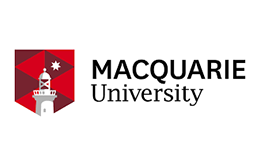







.png)




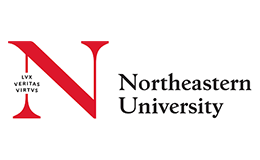
















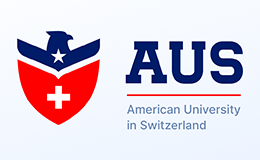


.png)















.png)
